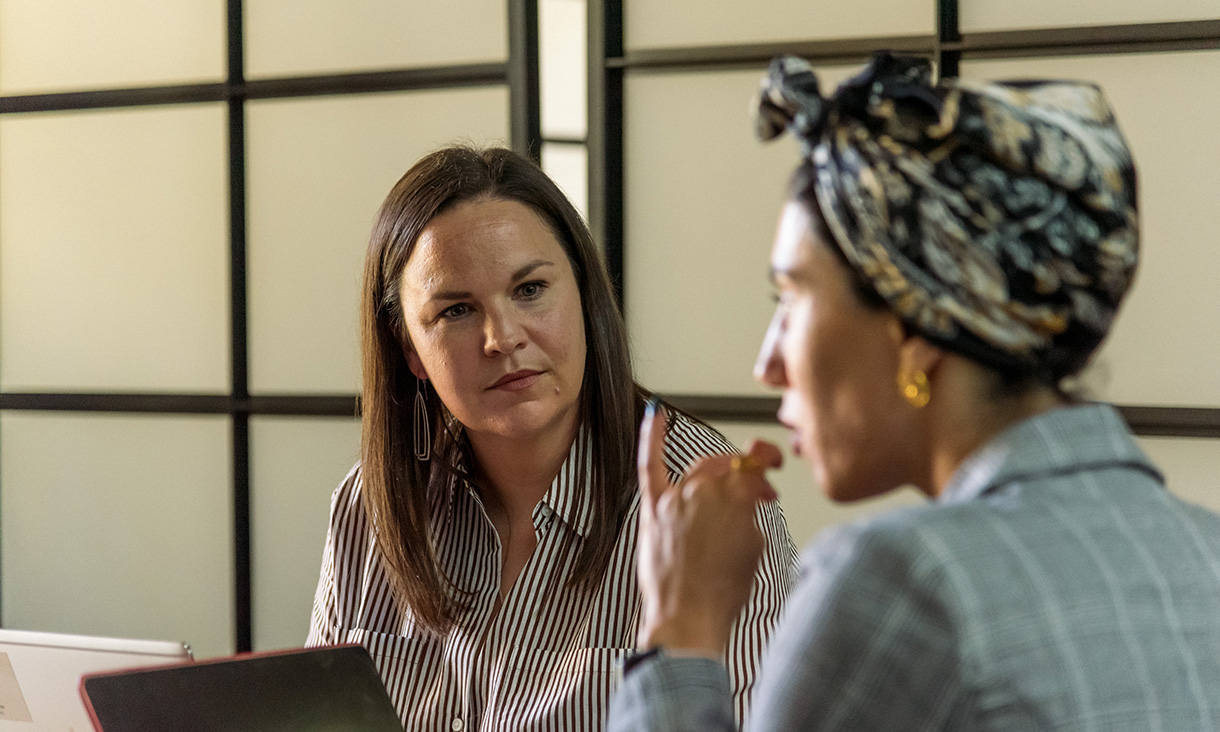Learn how to break through the barriers to tough conversations with these five tips that will help you master your approach.
Becoming the leader you aspire to be takes time, practice and patience. As you progress in your career, added responsibility brings new challenges, including conversations you might wish you didn’t have to have.
These tough conversations can be the catalyst for growth – your own and your peers and are essential to establishing a high-performance culture.
Whether it’s addressing poor results with your team, delivering constructive feedback on a task that didn’t hit the brief, or informing a job candidate they weren’t successful for a role, these five tips can help you master your approach.

1. Know your facts and be transparent
When confronting something that isn’t working as it should, gathering as much detail and insight beforehand is essential to having an honest and productive conversation.
This will enable you to go into the discussion with confidence, which in turn, will help you to communicate clearly and concisely, and get the message you need to get across with conviction.
Imagine a scenario where you’ve noticed a drop in performance of one of your staff members. If it’s something that is measurable, you might be able to access data that you can share with them. Having this additional detail to support and legitimise your feedback can help you to remain objective, while also providing the opportunity to ask questions and identify an underlying cause or roadblock that they mightn’t have yet sought assistance for.
2. Consider emotions and personality types
As leaders, it’s important to put people and their needs at the heart of how we behave and connect. Whether you’re engaging with a junior or more senior staff member, it’s vital to remember that no two people are the same and that everyone responds to situations and feedback differently.
While tough conversations may require a stern or serious approach, remaining empathic and respecting each person’s emotions, personality type and circumstances before you engage with them, can play a big part in how the conversation unfolds and how they respond.
Take the words of Raj Sharma, Vice Chair for Consulting at Ernst & Young (EY) Americas, who was quoted in a Forbes article by Kathy Caprino1: “If you show people who you are and that you have an understanding and appreciation for who they are, it is going to lead to conversations that will make people feel more comfortable with being uncomfortable. That’s when you are on your way to building a true culture of belonging and innovation.”
3. Be aware of the environment
It’s important to give consideration to how the person on the opposite end might react to the feedback or take the news you’re about to deliver, and a suitable environment is key to making sure all parties to a conversation feel comfortable.
If it’s a sensitive issue or the news might disappoint or upset the person you’re speaking to, the last thing they need is for other people to be around to witness and ask questions. After all, the conversation is between you and them only, so take some time to find a room or a location that’s private and safe and will allow for effective, uninterrupted communication.

4. Shift your perspective
It doesn’t matter how many years of experience you have, whether you’re a new leader or a CEO, it’s natural to feel a little uneasy when approaching certain conversations or addressing issues in the workplace.
How you view a situation can play a big part in how it evolves. So, beforehand, try to reframe an upcoming conversation you’re perceiving as tough to be necessary for improvement or change. This could help to calm any anxiety and allow you to approach the staff member or stakeholder respectively, with their own and the business’ best interests front of mind.
At the end of the day, you and your staff are working together towards a collective goal as an organisation, and a little guidance goes along way, so don’t be afraid to share it.
RMIT Bachelor of Business alum Andrew Van De Beek has a fantastic insight into shifting your perspective in the workplace to become a stronger leader.
“I am not an accountant called Andrew. I am an Andrew who happens to be great at accounting. That simple change of mindset allows me, and my team to approach our craft on a daily basis by not hiding our personalities and creating long lasting connections with our clients. Whilst we might be “accountants” we truly believe we are not in the business of numbers, rather the business of relationships. And the people we work with, inspire us to be better every day.”
5. Be solution-focused and ready to collaborate
As a leader you’re looked upon for direction so carry that through to all workplace conversations. While you lead discussion, genuinely listen, and take a collaborative approach to establish accountability and next steps with set expectations.
If you’re addressing junior staff, remember you were probably once in their shoes, so leverage your own experiences, and provide the feedback and support they need to grow.
Moving forward, continue to ask questions and maintain a relationship with open communication where constructive feedback is expected, and those tough conversations are part of a healthy, high-performing and high-achieving workplace culture.
As you consider these tips, it’s important to remember that your team’s feedback is just as valuable as yours. Be prepared to hear them out if something isn’t working - being empathetic and flexible can make all the difference. This may mean trying a different communication style or involving more team members in planning. The key to finding out what needs to change is having the tough conversation with your team and being open to their responses.
References
Kathy Caprino, Forbes, ‘Employees Now Expect Empathy In The Workplace, But Half Aren’t Getting It’, May 2023, accessed 31 July 2024 via: https://www.forbes.com/sites/kathycaprino/2023/05/25/employees-now-expect-empathy-in-the-workplace-but-half-arent-getting-it/